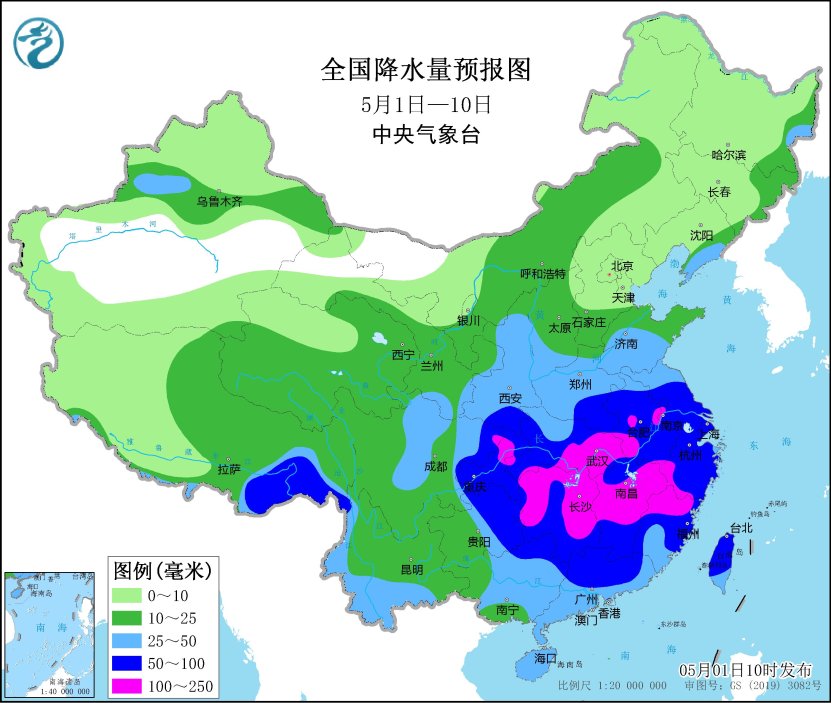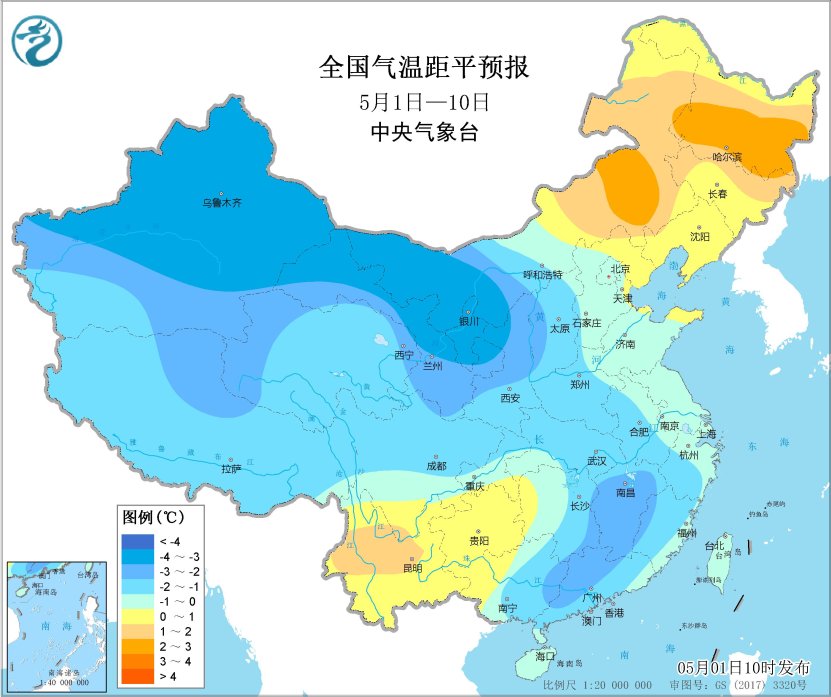Central Meteorological Observatory: There will be obvious rainfall in the late May Day holiday, and the temperature in most parts of the country will still be low.
CCTV News:According to the website of the Central Meteorological Observatory, in the next 10 days (May 1-10), the cumulative precipitation in southern Jianghan, Jianghuai, Jiangnan, central and northern South China, Chongqing, eastern Guizhou and southeastern Tibet will be 50-100 mm, and some areas will be 120-180 mm; The cumulative precipitation in the eastern part of northwest China, western North China, northeastern Inner Mongolia, northeastern China, Huanghuai and other places is 10 ~ 30 mm; The precipitation in most of the above areas is 30 ~ 70% more than normal, and the local area is more than twice as much. The precipitation in meteorological arid areas in Yunnan, southern Sichuan and western Guangxi is still less, and the drought will continue to be maintained and developed.

In the next 10 days, except for the central and eastern Inner Mongolia, Northeast China and Yunnan-Guizhou Plateau, the average temperature is about 1℃ higher than normal, and the average temperature in most other parts of the country is 1~2℃ lower than normal, with some areas in Xinjiang, Gansu and western Inner Mongolia being more than 3℃ lower.

Main weather process
On May 2-4, there were moderate to heavy rains in Jianghuai, Jianghan, northern Jiangnan and Huanghuai, and there were heavy rains in some areas, local heavy rains and strong convective weather such as thunderstorms and strong winds.
From May 5 to 7, there will be a large-scale rainfall process in the central and eastern regions, including heavy rain in parts of Jiangnan, northern South China, Chongqing and eastern Sichuan, and local heavy rain.
Long-term weather outlook
In the next 11-14 days (May 11-14), the accumulated precipitation in Jiangnan, South China, Southwest China and Southeast Tibet will be 10-40 mm, and the precipitation in most parts of the south will be 20-50% less than normal.
In the next 11-14 days, the average temperature in the eastern part of Northwest China, western North China, Inner Mongolia, Northeast China, Jianghuai, Jiangnan, South China and Southwest China will be 1-2℃ lower than normal, with Inner Mongolia, Yunnan and Guizhou being more than 3℃ lower.
High-impact weather and concern
1. There is an obvious rainfall process in the late May Day holiday.
From May 2, there were moderate to heavy rains in Jianghuai, Jianghan, northern Jiangnan and Huanghuai, and there were heavy rains in some areas, local heavy rains and strong convective weather such as thunderstorms and strong winds. The accumulated rainfall in eastern Hubei, southeastern Henan, southern Anhui and other places will probably approach or reach historical extremes. On 5-7 days, the rain belt will gradually press southward to the south-central part of the south of the Yangtze River to the south of China.
The temperature is low in most parts of the country.
In the next 10 days, the average temperature in most parts of the country will be 1~2℃ lower than normal, and some areas in Xinjiang, Gansu and western Inner Mongolia will be more than 3℃ lower. The main impact period of cold air is 3-6 days, and there will be sand dust or sand blowing weather in parts of the eastern part of northwest China and northern North China.